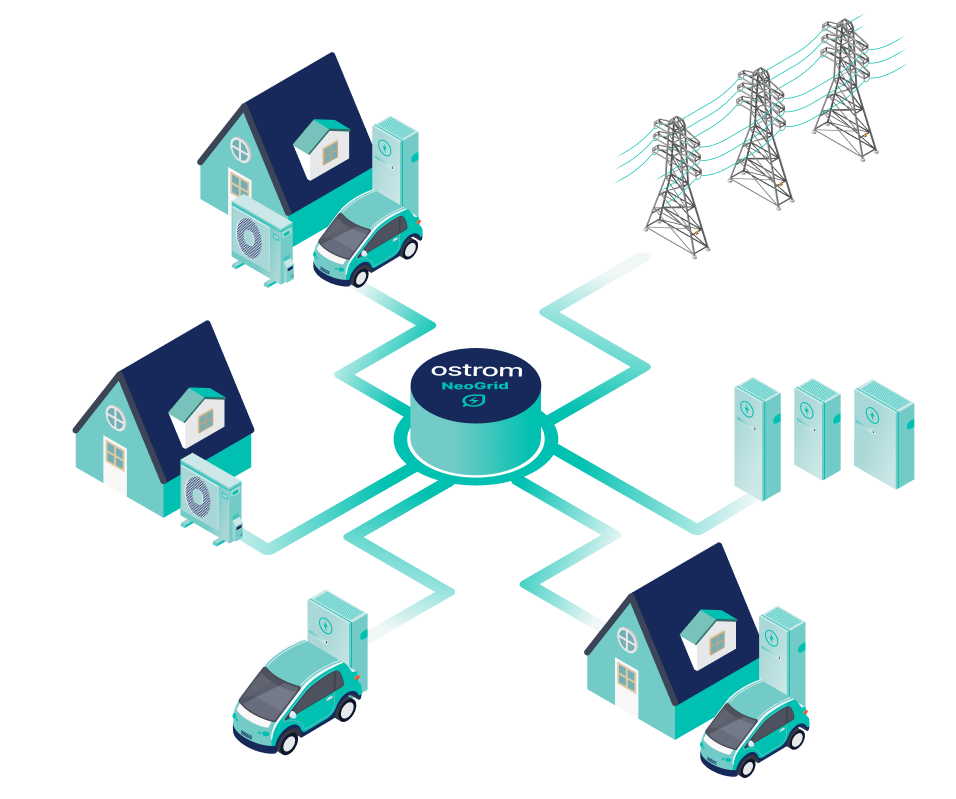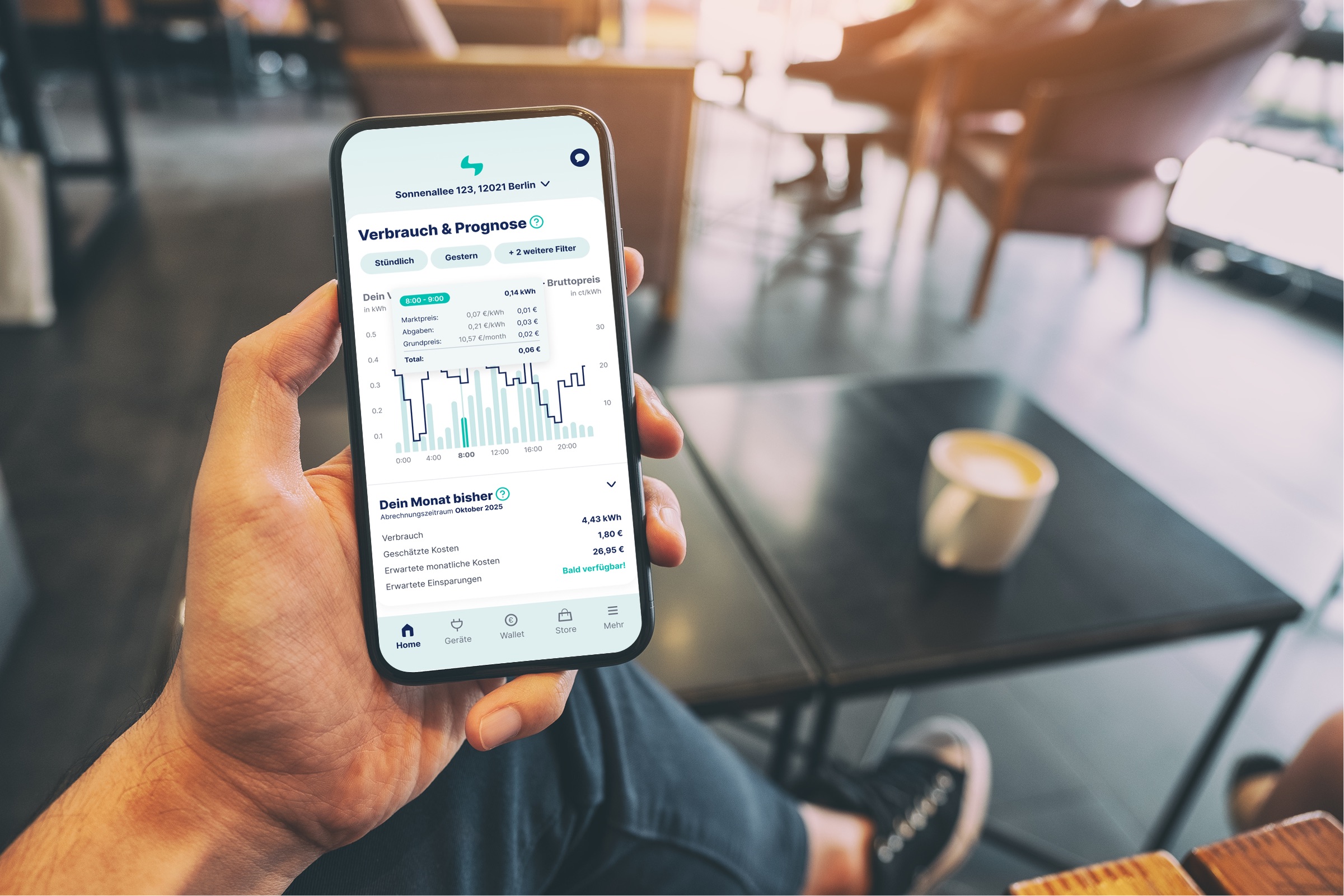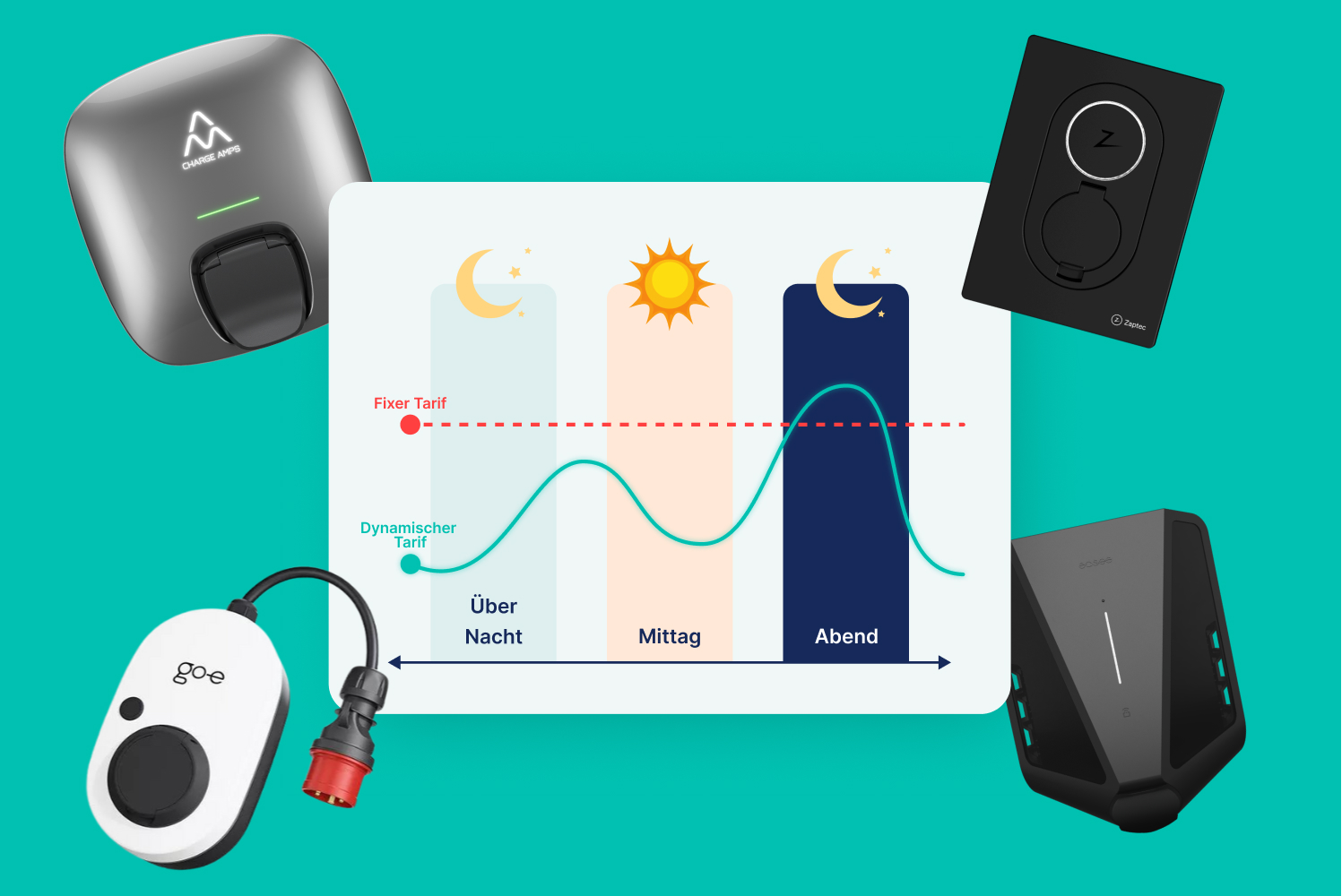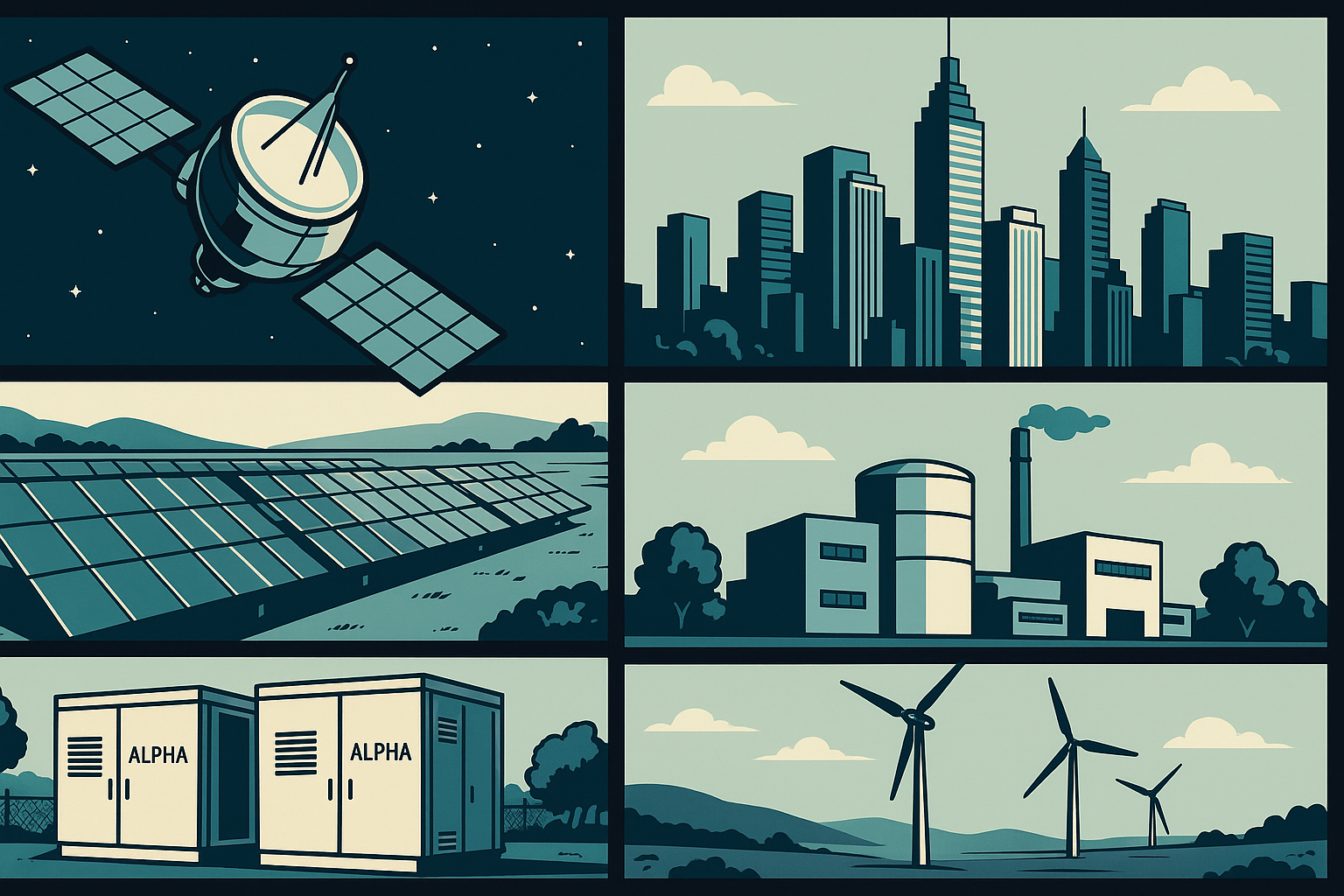Energy
Wir Erklären den Ostrom-Tarif
By
Rahel Kunkel
9.11.2021

8
Min.

Deinen richtigen Stromtarif zu finden ist gar nicht so einfach. Bei all den Tarifoptionen, die einem geboten werden, kann man schnell mal den Überblick verlieren.
Und zwar nicht nur, wenn man die verschiedenen Anbieter vergleicht, denn oftmals werden sogar gleich mehrere Tarife mit unterschiedlichen Laufzeiten und Vertragskonditionen angeboten. Intransparente Kostenstrukturen sind da nur der Anfang: 12, 24 und 36 Monate Vertragslaufzeiten, Neukundenboni, Wechselboni oder sogar Stromtarifpakete, bei denen man ein Handy oder eine Waschmaschine dazu bekommt?
Dass die Energiewirtschaft und das Strombusiness an sich nicht gerade einfach zu verstehen sind, machen sich die Versorger zu Nutzen und versuchen mit allerhand Tricks neue Kund:innen zu gewinnen und diese möglichst lange zu binden. Durch lange Vertragslaufzeiten wird nämlich darauf spekuliert, dass Kund:innen vergessen zu kündigen und diese dann auf einen teureren Vertrag migriert werden können.
Unklarheiten wie sich der Stromtarif dann genau zusammensetzt kommen dann noch dazu und sind nur die Spitze des Eisbergs.
Kundenzufriedenheit, Transparenz und wirtschaftlich verantwortungsvolles Handel stehen sich aber nicht im Wege. Wir erklären dir kurz, wie sich unser Tarif bei Ostrom ganz einfach zusammensetzt und was die einzelnen Kostenbestandteile bedeuten.

1. Stromgestehungskosten (Kaufpreis)
Die Kosten der Stromerzeugung sind im Grunde alle Kosten, die bei der Energieumwandlung von Rohstoff zu Strom anfallen. Wenn zum Beispiel Strom durch Solarenergie erzeugt wird, setzen sich die Stromerzeugungskosten aus Bau-, Instandhaltungs- und Betriebskosten der PV-Anlagen sowie der Umwandlung von Sonnenenergie in Strom, zusammen. Bei konventionellen Kraftwerken kommt dann noch der Einkauf der Rohstoffe hinzu, aber auch z.B. die Kosten der Endlagerung von Atommüll oder auch die Umweltkosten bei Kohlestromerzeugung.
Die Produktions- und Umweltkosten der verschiedenen Energiequellen kannst du der folgenden Grafik entnehmen. Weitere Infos zu den Stromgestehungskosten von erneuerbaren Energien, findest du hier nochmals vertieft.

2. Netzentgelte
Netzentgelte oder auch Netznutzungsentgelte werden von den regionalen Netzbetreibern erhoben und dienen als Entgelte für den Bau, Betrieb und die Instandhaltung der Stromnetze.
Strom, der nämlich bei uns aus der Steckdose kommt, muss zunächst in Umspannwerken von Mittel- aus Niederspannungsegebe gebracht und dann durch Leitungen transportiert werden. Außerdem sind die Netzbetreiber für das Gleichgewicht im Netz verantwortlich. Das heißt: Es darf immer nur so viel Energie im Netz sein, wie tatsächlich auch gebraucht wird. Der Ausbau des Netzes, der vor allem im Zuge der Energiewende immer relevanter wird, gehört auch zu den Aufgaben der Netzbetreiber. Haushaltskunden zahlen die Netzentgelte nicht direkt, sondern über ihren Stromanbieter, der diese dann an die Netzbetreiber weitergibt.
Netzentgelte können je nach Region unterschiedlich hoch ausfallen. Das liegt meist an den Kosten der Übertragungsnetzbetreiber (von Hoch- auf Mittelspannungsebene), die sich für Netzausbau und Netzstabilität regional unterscheiden können und somit an die Verteilnetzbetreiber weitergegeben werden.
3. EEG-Umlage
Die Erneuerabre-Energien-Gesetz-Umlage (EEG-Umlage) nach dem EEG dient zum Ausgleich der Differenz, die zwischen den Stromproduktionskosten von erneuerbaren Energien Erzeugungsanlagen und dem Strompreisen an der Börse entsteht. Da Übertragungsnetzbetreiber dazu verpflichtet sind, Strom aus erneuerbaren Energien Erzeugungsanlagen vorrangig ins Netz einzuspeisen und diesen zu einem festgelegten Vergütungssatz abzunehmen, kann durch die Marktprämie, die durch die EEG-Umlage finanziert wird, der Strom aus erneuerbaren Energien wettbewerblich an der Strombörse oder über Direktverträge vermarktet werden.
4. Sonstige Steuern Und Öffentliche Abgaben
- Stromsteuer
Als Teil der Ökosteuer ist die Stromsteuer eine indirekte Steuer, die beim Stromlieferanten entsteht, wenn Strom vom Endverbraucher bezogen und an diesen weitergegeben wird.
- Mehrwertsteuer
Die Mehrwertsteuer in Höhe von 19% wird auf alle Strompreisbestandteile aufgeschlagen.
- KWK-Umlage
Die KWK-Umlage dient der Förderung der Stromerzeugung aus Blockheizkraftwerken/Kraft-Wärme-Kopplungsanlagen (neben der Stromerzeugung wird auch Wärme erzeugt und kann als Nah- oder Fernwärme genutzt werden).
- §19 NEV-Umlage
Industrieunternehmen erhalten eine Sonderregelung für Netzentgelte. Um diese verminderten Netzentgelte zu finanzieren, wird die NEV-Umlage erhoben.
- Offshore-Haftungsumlage
Die Offshore Haftungsumlage wird erhoben, um Schadensersatzforderungen, die durch Verzögerung und Ausfälle bei der Netzanbindung von Offshore-Windparks entstehen könnten.
- Konzessionsabgabe
Wird von den Kommunen erhoben, als Gegenleistung für die Nutzung von öffentlichen Straßen und Wegen (Wegerecht) zur Verlegung und Instandhaltung von Stromleitungen
5. Ostrom Grundgebühr
Wir, als Ostrom, kümmern uns um den Kundenservice, Rechnungsstellung, die Marktkommunikation mit dem Netz und den Alt-Lieferanten sowie die Beschaffung und Belieferung von Strom. Da wir dir den Strompreis zu Einkaufpreis weiterreichen, erheben wir für die oben genannten Leistungen eine kleine Grundgebühr. Diese können wir durch unsere effizienten Prozesse und Strukturen sehr klein halten und somit unseren Kund*innen eine transparente Preisgestaltung weitergeben.
Wo Der (O)Strom Herkommt Und Warum Wir Einen Flexiblen Tarif Anbieten
Wir, als Ostrom, kaufen Strom durch unsere Partnerschaften mit grünen Stromerzeugern, wenn wir können, immer direkt oder im Großmarkt aus zertifiziert grünen Quellen. Durch unser PPA mit dem Solarpark Maßbach, beziehen wir unseren Strom direkt vom Erzeuger. Dennoch können wir nicht die komplette Stromnachfrage durch unseren Direktvertrag abdecken und kaufen deshalb Strom an der Börse aus zertifiziert grünen Quellen zu und sind demnach auch abhängig von aktuellen Strompreisschwankungen. Als dein Energieversorger wollen wir wirtschaftlich verantwortungsvoll handeln und so müssen wir regelmäßig Kosten überprüfen und gegebenenfalls auch Preise anpassen. Da wir unsere Strompreise zum Einkaufspreis an unsere Kund:innen weitergeben, bleibt unsere Tarifstruktur genauso transparent wie vorher, sprechen aber keine Preisgarantie für unsere Kund:innen aus.
Die Stromgestehungskosten oder Stromerzeugungskosten (Einkaufspreis an der Börse) sind jedoch nur für einen Teil der Tarifkosten verantwortlich. Dieser besteht zudem auch aus Abgaben, Umlagen, Netzentgelten, Margen der Versorger sowie der EEG-Umlage.
Dein Stromtarif Setzt Sich Also Aus Einem Fixen Und Einem Variablen Teil Zusammen.
Der fixe Anteil wird Grundpreis genannt, der variable Anteil, Arbeitspreis. Der Grundpreis bleibt also unverändert, der Arbeitspreis ist abhängig von deinem Verbrauch.
Der Arbeitspreis ist also der aktuelle Preis, den du pro kWh bezahlst. Da fließen die aktuellen Stromerzeugungskosten, Steuern, Abgaben und Umlagen sowie variable Kosten der Netzbetreiber mit ein.
Der Grundpreis setzt sich aus den Fixkosten der Netzbetreiber sowie der Ostrom Gebühr zusammen und bleibt unverändert.
















.avif)